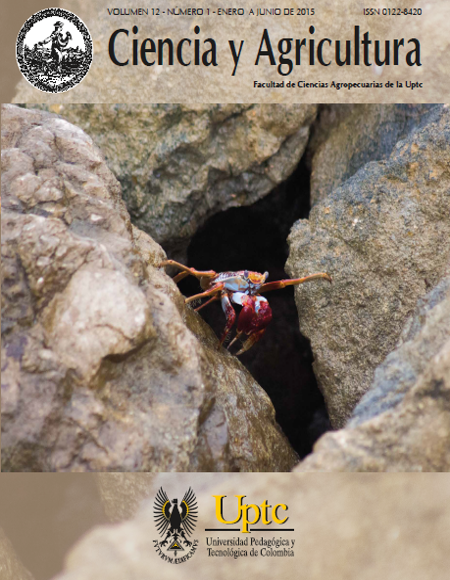Dietary Supplementation of Increasing Levels of DLMethionine and L-Lysine in Hypoproteic Diets for Laying Hens Improves Productivity and Egg Quality

Abstract
To evaluate the effect of dietary supplementation of DL-methionine and L-lysine in hypoprotein diets on productivity and egg quality, a total of 240 White Leghorn laying hens (Hybrid L-33) of 26 weeks during laying peak period were placed for 49 days, according to completely randomized design with four treatments and 10 repetitions. Dietary treatments consisted of a control diet (no amino acid supplementation) (T0) and supplementation of 0.03% DL-Met and 0.04% L-Lys (T1), 0.06% DL-Met and 0.08% L-Lys (T2) and 0.09% DL-Met and 0.12% L-Lys (T3). At 26 and 33 weeks of age, 30 eggs per treatment were collected to determine internal and external egg quality parameters.
The experiment diets did not affect the viability and feed intake. Supplementation of essential amino acids, especially the T3 improved egg weight (54.30 to 58.30 g), laying rate (76.89 to 85.45%) and mass conversion (2.52 to 2.11 kg/kg) (P<,0.05). At 33 week, the albumin height (7.21 to 8.23 mm), Haugh units (86.70 to 91.15) (P<,0.05) and shell surface (67.10 to 69.20 cm2) increased by the effect of supplementation of DL-Met and L-Lys. The results allow recommending the dietary supplementation of 0.09% DL-Met and 0.12% L-Lys in hypoprotein diets to improve productivity and egg quality in laying hens.
Keywords
hypoprotein diet, DL-methionine, L-lysine, laying hen, egg productivity, egg quality
References
- O lmo C., Y. Martínez, E. León,L. Leyva, M. Núñez, R. Rodríguez, A. Labrada,M. Isert, C. Betancur, M. Merlo, and G. Liu. 2012.Effect of mulberry foliage (Morus alba) meal on growth performance and edible portions in hybrid chicken. Inter. J.Anim. Vet. Adv.4(4): 263-268.
- Labadan M. C., K. N. Hsu, and R. E. Austic (2001). Lysine and arginine requirements of broiler chickens at two to three-week intervals to eight weeks of age. Poult. Sci. 80(5): 599-606.
- R ostagno H., L. F. Teixeira, J. L. Donzele, P. C. Gomes, A. S. Ferreira, R. F. Oliveira, C. Lopes, andS. L. Toledo (2005). Tabelas brasileiras para aves e suinos: Composição de alimentos e exigências nutricionais; 2th Ed. UFV-DZO (Brazil).
- National Research Council, (NRC) (1994).Nutrient Requirements of Poultry.9thEd. Academy Press Newsletter (Washington D.C). 6: 14.
- Vieira S. L., A. Lemme, D. B. Goldenberg, and I. Brugalli (2004). Responses of growing broilers to diets with increased sulfur amino acids to lysine ratios at two dietary protein levels. Poult. Sci. 83(8):1307-1313.
- Aguilar Y. M., M.V. Navarro, M. E. Espinosa, O. M. Yero, R. C. Ramírez, M. Murkovic, and J. C. López (2013). Investigation of the variable chemical composition of the seeds of five cultivars of Cucurbita maxima and Cucurbita moschata from Cuba and Mexico. Ernährung/Nutrition. 37(12): 445-453.
- Corzo A., T. Moran, and D.Hoehler (2004). Lysine need of heavy broiler males applying the ideal protein concept.Poult. Sci. 81(12):1863-1868.
- Tan B., Y. L. Yi, E. Zhiqiang, E. Liu, L. Xinguo, X. Haijun, K. Xiangfeng, H. Ruilin, T. Wenjie, S. Izuru, B. Stephen, S. Smith, and W. Guoyao (2009). Dietary L-arginine supplementation increases muscle gain and reduces body fat mass in growing-finishing pigs. Amino Acids. 37(1):169-175.
- Faria E., H. Harms, B.Antar, and B. Russell (2003). Re-evaluation of the lysine requirement of the commercial laying hen in a corn-soybean meal diet.J. App. Anim. Res. 23(2):161-174.
- Martínez Y., J. Córdova, A. Santana, O. Martínez, M. Valdivié, and C. Betancur (2012). Productivity and egg quality in laying hens fed increasing levels of pumpkin (Cucurbita maxima) seed meal.Rev. Mex.Cienc. Pecu.3(1): 65-75.
- Unión de Empresas del Combinado Avícola Nacional (UECAN) (2011). Manual Tecnológico para la cría de aves. Ponedoras y sus reemplazos. 5th Ed. MINAG (Habana). 9 p.
- Kong X. F., Y. L.Hu,Y. L. Yin, G. Y.Wu, R. Rui,D. Y. Wang, andC. B.Yan (2006). Chinese herbal ingredients are effective immunestimulators for chickens infected with the Newcastle disease virus.Poult. Sci. 85(12):2169-2175.
- Font H., V. Torres,M. Herrera,and R. Rodríguez (2007). Fulfillment of the normality and the homogeneity of the variance in frequencies of accumulated measurement of the egg production variable in White Leghorn hens. Cuban J.Agr.Sci.41(3): 207-211.
- Faria D. and E. Dos Santos (2005). Nutritional requirements of layers. Simpósio internacional sobre exigências nutricionais de aves e suínos. Ed. EmbrapaSuínos e Aves (Brasil), Rostagno, H. L. 457 p.
- Leeson S.,andJ. D. Summers (1983). Fats in animal nutrition. Ed. Wiseman; J. Nutterworths (Londres). 205 p.
- Roland D, A., M. Wu, M. Bryant, and R. A. Voitle (2005). Effect of dietary energy on performance and egg composition of Bovans Dietary Supplementation of Increasing Levels of DL-Methionine and L-Lysine in Hypoproteic Diets for Laying Hens Improves Productivity and Egg Quality White and Dekalb White hens during phase I. Poult.Sci. 84(10): 1610-1615.
- Novak C., and S. Scheideler (2001). Longterm effects of feeding flaxseed-based diets. Egg production parameters, components, and egg shell quality in two strains of laying hens. Poult. Sci. 80(10): 1480-1489.
- Whitehead C. C. (1995). Plasma oestrogen and the regulation of egg weight in laying hens by dietary fats. Anim. Feed Sci. Technol. 53(2):91-98.
- Tallarico N., E. Sirri, A. Meluzzi, P. Pittia, G. P. Parpinello, and A. Franchini (2002). Effect of dietary vegetable lipids on functional and sensory properties of chicken eggs.Ital. J. Food Sci.(14):159-165.
- Kim J., J. Hwangbo, N. Choi, H. Park, D. Yoon, E. Park, S. Lee, B. Park, and J. Kim (2007). Effect of dietary supplementation with conjugated linoleic acid, with oleic, linoleic, or linolenic acid, on egg quality characteristics and fat accumulation in the egg yolk.Poult.Sci. 86(6):1880-1886.
- Suk Y., and C. Park (2001).Effect of breed and age of hens on the yolk to albumen ratio in two different genetic stocks.Poult. Sci. 80(7): 855-858.
- Grobas S., J. Méndez, R. Lázaro, C. Blas, and G. Mateos (2001). Influence of source and percentage of fat added to diet on performance and fatty acid composition of egg yolks of two strains of laying hens. Poult. Sci. 80(8):1171-1179.